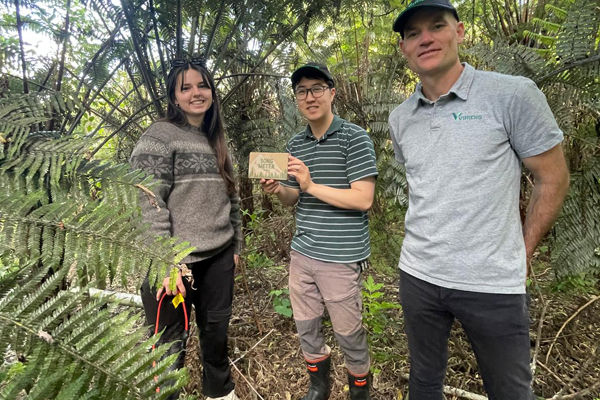Finding feathered friends at Rosedale Park
- Te Hōnonga a Iwi

- 7 hours ago
- 3 min read

Student journalist Alex Zhang gets the lowdown on technology keeping track of native birds at the restoration.
A new high-tech bird call monitor is being put to good use at Te Hōnonga a Iwi Restoring Rosedale Park thanks to Viridis Limited, an environmental consultancy based in Rosedale.
The new equipment will allow us to closely monitor the number of feathered creatures that call Rosedale Park their home.
This will be a game-changer for restoration at Rosedale Park, and as our Activator and Working Bee Co-ordinator Elouise Shuker says, “Bird monitoring every six months from this year will help us build critical data in addition to the monitoring for pest animals that we do."
Elouise also shared that the team hopes that through reducing the number of pest animals and planting more native trees in the areas, the indigenous bird community will thrive in the future.
But why is it so critical to monitor the presence of birds in the area? The reason for its significance is due to the distinctive position the restoration area occupies. Situated in the middle of an extensive industrial area, it is an essential wildlife corridor for the region’s ecosystem. Rosedale Park serves as a key location for habitat connectivity between ngāhere at Fernhill Escarpment, Unsworth Heights, and Greenhithe. The goal is for the restoration site to serve as safe passage for birds, bats, lizards, invertebrates and more.
The bird call monitor offers an objective, accurate means of monitoring this success.

“It’s a fantastic way to be able to accurately identify which birds are calling without having to rely on experts,” Elouise says.
Furthermore, this information also gives us clear means for measuring success in restoration. “Different species exhibit different behaviour in terms of dispersal, home ranges, and migration patterns,” Elouise further explains. “Introduced species, for instance, wouldn’t be so affected by predators. However, our special New Zealand natives had evolved in the absence of predators. An increase in natives would be directly linked to successful pest control!”
Encouragingly, kākā have been spotted at The Landing just downstream from Rosedale Park and Elouise says it would be incredible if monitoring at our restoration picked up the presence of some of these beautiful birds.
All of this would not have been possible without the help from Viridis Limited. Viridis is a New Zealand owned company run by ecologists and environmental scientists with a range of skills and experience. They work on improving ecological outcomes for a variety of projects, offering high-quality, cost-effective environmental solutions to clients in the public and private sectors.

“We’ll concentrate on long-term monitoring; things like the status of freshwater ecosystems and fauna surveys, even doing five-minute bird counts,” explained Viridis Ecologist Timothy Yang. “This type of information helps establish well-defined objectives, which every successful restoration project requires.”
When asked the reason for Viridis’ collaboration with us, Timothy’s reply was unambiguous. “When we heard about the organisation, we decided that we want to be a part of it. The cause Te Hōnonga a Iwi is supporting is in line with the values that we hold, which is to look after the local environment."
Thanks to Viridis’ kindness in lending us the bird call monitor, we now also have the capability to run an education initiative with youth in the area. We look forward to inspiring young individuals who have an interest in using technology to accurately measure ecological change, thus encouraging the next generation of kaitiaki.
If you would like to learn more about the bird monitoring tool and would like to join us for a session with Timothy, please email coordinator@restoringrosedalepark.org.nz. We would love to have you along! Together, we’re listening for the future of environmental restoration.






Comments